 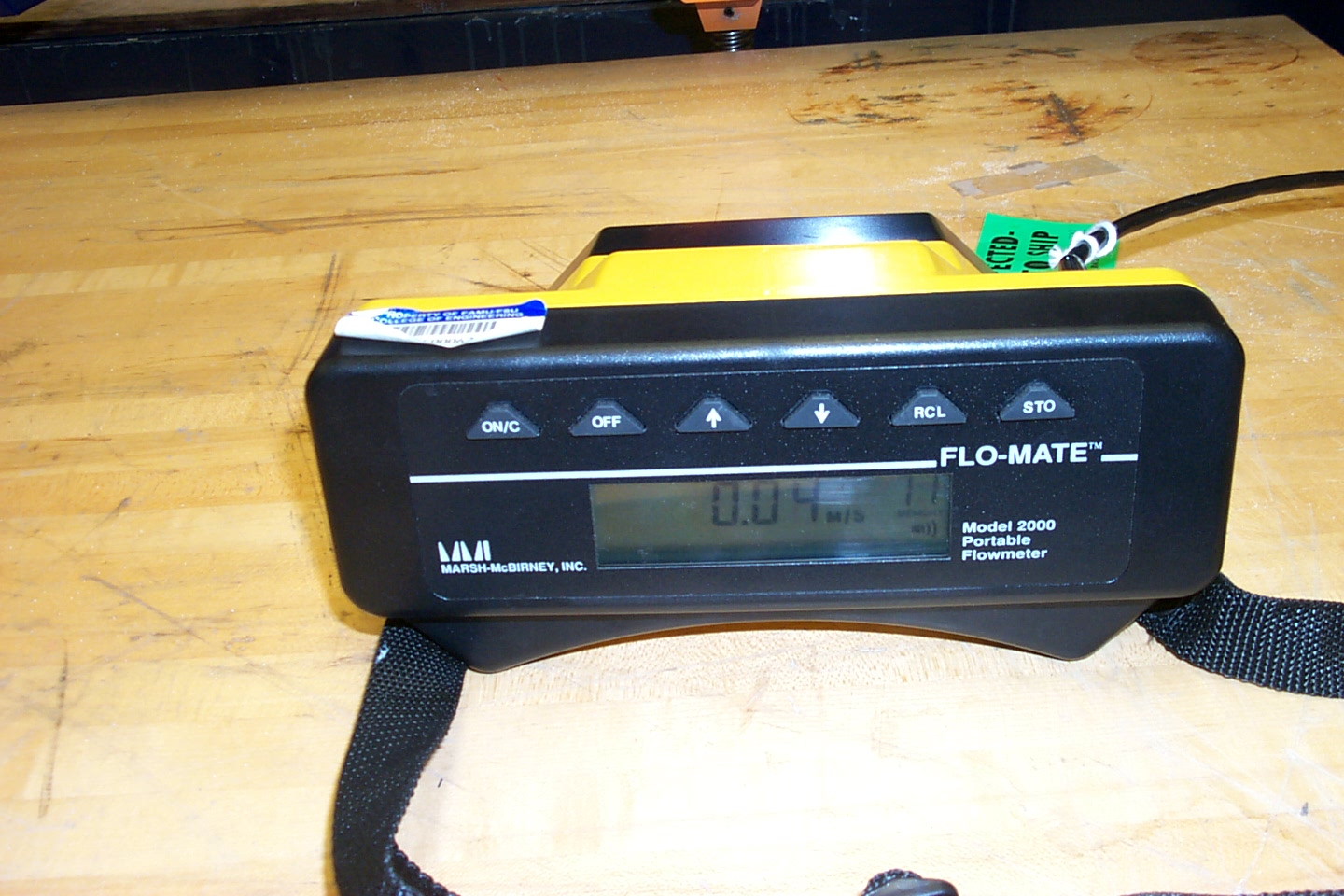 |
Digital
Flow
Meter
The digital flow meter shows the evidence
of the improvement of the Hydraulic Lab.
Two digital flow meters, named
Flowmat, were purchased in 1999 to improve
the experimental capability and teaching
effectiveness. The digital flow meter was popularly used by many
state agencies and engineering firms in
field hydraulic measurement.
Velocity in open channels (both in lab and
field experiments) can be measured and
digitally recorded using this
electromagnetic flow meter, named Flowmate.
|
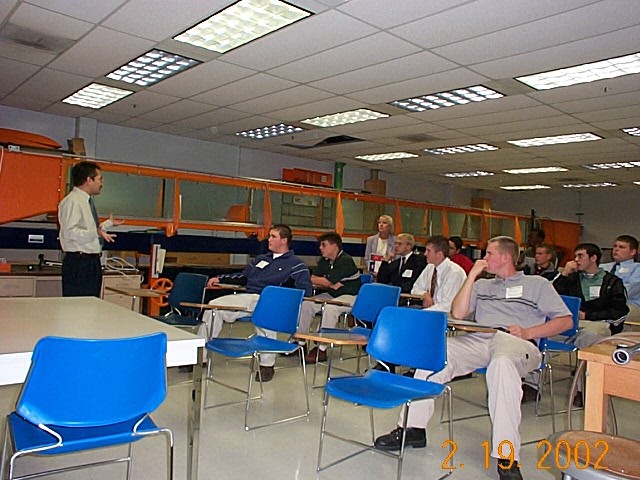 |
Dr. Huang gave a presentation about
hydraulics and water resource engineering to the visitors of high school
students, and gave an experiment demonstration
about flow over a spill way in a dam. The
background shows a open channel flume and
the experiment set up.
|
 |
Fluid
Friction Apparatus
It is used to determine the coefficient of
discharge for flow measuring devices such
as the venturimeter and the orificementer,
in closed conduits, and to measure the
velocity through a pitot tube, and
verifying the continuity equation.
It is also used to determine the
relationship between fluid friction
coefficient and Reynold's number for the
flow of water through a pipe having a
roughened bore.
|
 |
Engineers from Northwest Florida Water
Management District calibrated field flow
meter in the open channel flume. Engineers
from DEP also used this flume to calibrate
flow meters for field data collection. |
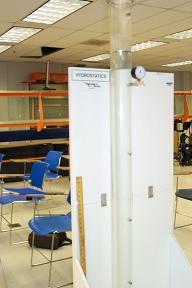
|
Water
Column with Pressure Tap at Regular
Intervals
It
is used to demonstrate the relationship of
static pressure head to
pressure
measured by a pressure gauge.
|
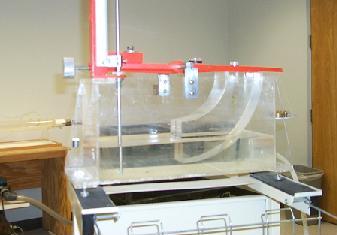
|
Hydrostatic
Pressure and
Center of Pressure Apparatus
It is used to investigate the validity of
the formulas for resultant force on, and
position of center of pressure on, a
vertical rectangular surface.
|
|
|
|
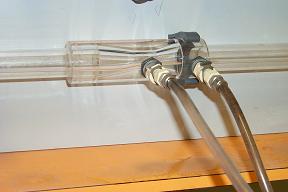
|
Venturimeter
It is a
device that applies indirect methods to
measure the rate of flow in closed
conduits. It operates on the same
principle as the orifice but with a much
smaller head loss.
|
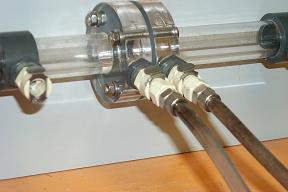
|
Orificemeter
It is a device that applies indirect
methods to measure the rate of flow in
closed conduits. If thr geometric
characteristics of the orifice plus the
properties of the fluid are known, then
the orificemeter can be used to measure
flow rates.
|
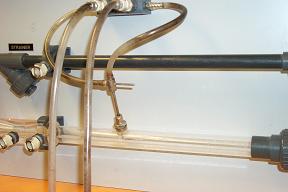
|
Pitot
Tube
The Pipto tub, named after the
eighteenth-century French hydraulic
engineer who invented it, has a press tap
at the upstream end of the tube for
sensing the stagnation pressure. There are
also ports located several tube diameters
downstream of the front end of the tube
for sensing the static pressure in the
fluid where the velocity is essentially
the same as the approach velocity.
|
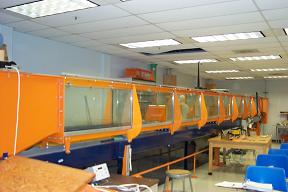
|
Self-contained
Glass Tilting Flume
It
is used to examine the validity of the
Manning's equation for flow in sloped
channels, and determine the Manning's
roughness coefficient.
|
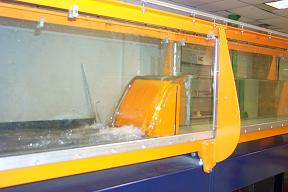
|
Rectangular
Weir
It
is used to study the characteristics of
flow in open channels using the
sharp-crested, suppressed rectangular
overshot weir as a measuring device.
|
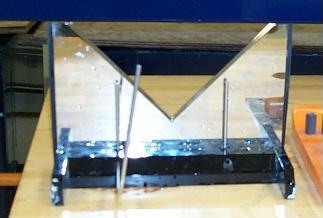
|
Triangular
Weir
It
is used to study the characteristics of
flow in open channels using the
sharp-crested, suppressed rectangular
overshot weir as a measuring device.
|
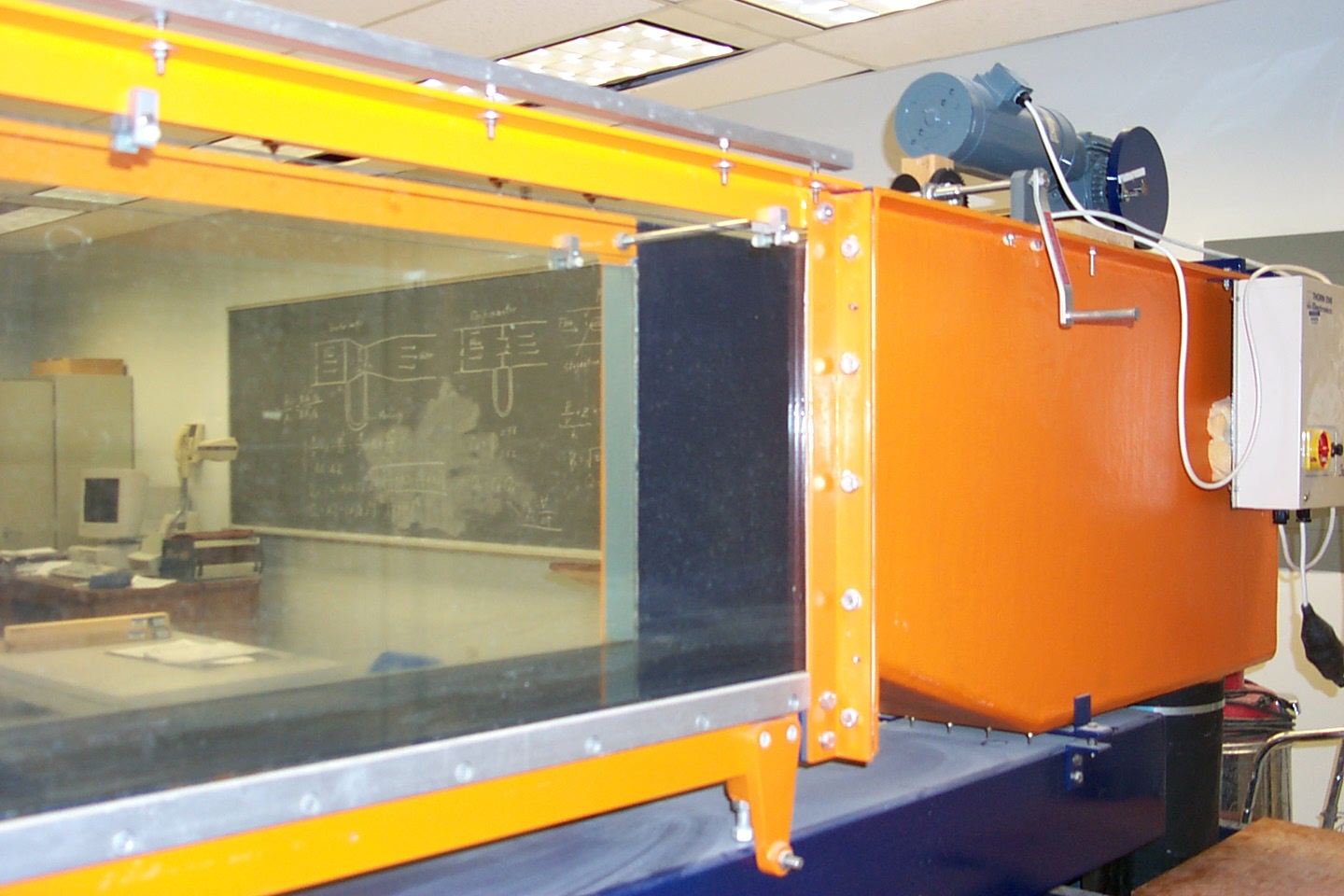 |
The open channel flow is
equipped with a wave generator for wave
experiments. |
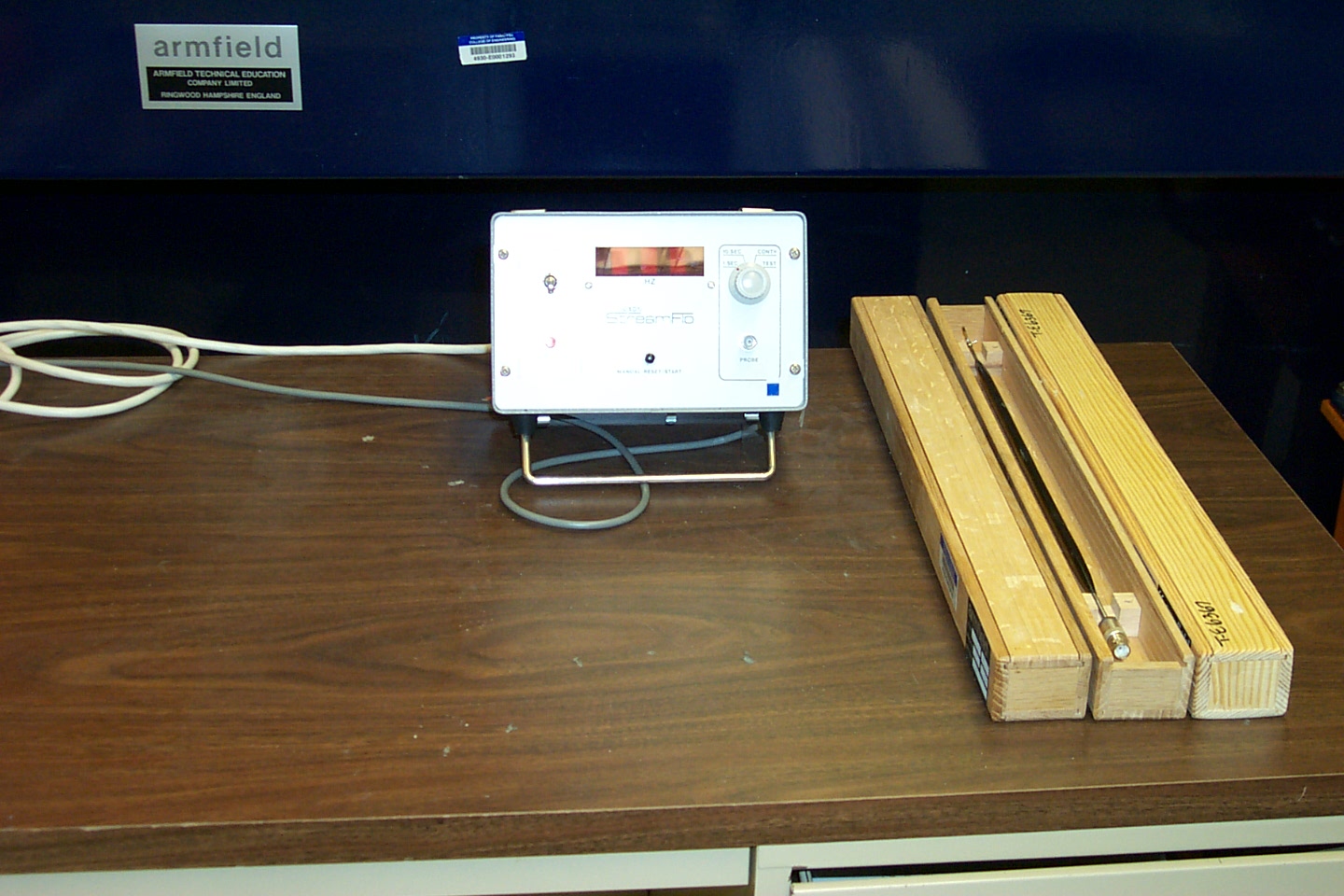 |
The flow probe for
flow measurements. |
| |
|
| |
|
| |
|
| |
|